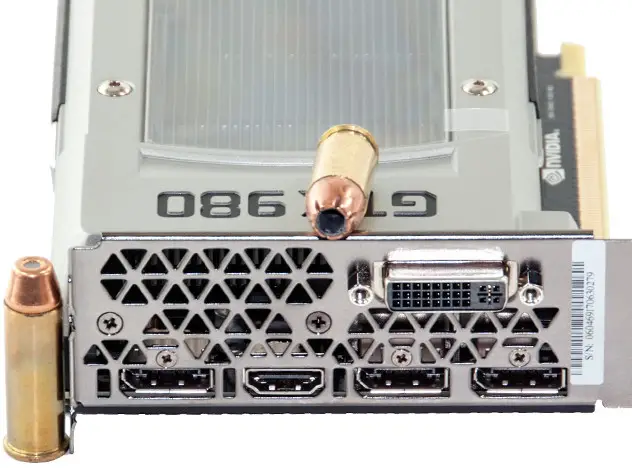Closing statement
The GeForce GTX 980 “Maxwell” graphics processor unit is one of those pieces of technology that is rarely seen as it literally changes the market and the way consumers evaluate a video card. Up until the 980 release there was no ifs, no ands, and no buts about it, if you wanted the highest performance card you knew it was going to be hot running. You knew it was going to need a robust cooling solution that probably was even bigger and louder than its predecessors. Most importantly you knew it was going to hit the very limits of power consumption as it would come with a core that had a noticeably higher core count than its predecessor.
The GeForce GTX 980, and by extension the ‘reference’ PNY XLR8 GeForce GTX 980 is not like its predecessors and does not follow the same outdated design philosophy. Instead it represents a paradigm shift for the industry and how consumers will look at high performance models. No longer will bigger CUDA core counts automatically mean better performance. Instead GPUs will be just like CPUs and a next gen may not impress people with its paper specifications but will impress in the real world.
Put simply the main design goal of the GeForce GTX 980 series is to do more with less and the PNY XLR8 GeForce GTX 980 is the very epitome of this philosophy made whole. Thanks to greatly refined core architecture and memory handling this new video card with its XXhow manyXX fewer CUDA cores, and greatly reduced TDP, the PNY GeForce GTX 980 XLR8 easily outperforms a reference GeForce GTX 780. More importantly, while there were a few times when the extra efficiency of the 980 was equaled by the 780Ti’s brute force approach, at the end of the day this card is faster than even that power house in the majority of scenarios. That is a major feat and just underscores the amount of engineering that NVIDIA has put into this new generation.
While the performance of the PNY 980 XLR8 is impressive, it is actually the non-performance results which are sure to please. Thanks to the lower power requirement of the Maxwell architecture PNY was able to release a truely high performance video card that is not only a power miser but also rather quiet. Blower style coolers are typically not known for their low noise and cool running abilities, but this blower not only looks great, but sounds great too. No matter your priorities, that is a rather potent combination and sure to please most consumers.
With all that being said, and there is a very good argument for the new direction NVIDIA is taking the market, this new generation of video cards offer very little incentive for 780Ti owners to upgrade to. Put simply, the performance increase this stock PNY 980 XLR8 offers is not significant enough to justify the upgrade expense, and neither does the energy savings make it worthwhile. Considering a most 780Ti’s also came with custom cooling solutions which are even quieter, such an upgrade path is simply less than optimal.
As such, we do have a hard time recommending the PNY GeForce GTX 980 XLR8 in its current form to owners of the previous generation’s best performers. For these consumers we would take a wait and see approach. Instead wait for the 980Ti – or whatever they will call it -lands and then reevaluate the issue at that time. For everyone else, this reference 980 is sure to satisfy as it literally changes all the rules of the game. From now on you can indeed eat your cake and have it too,













